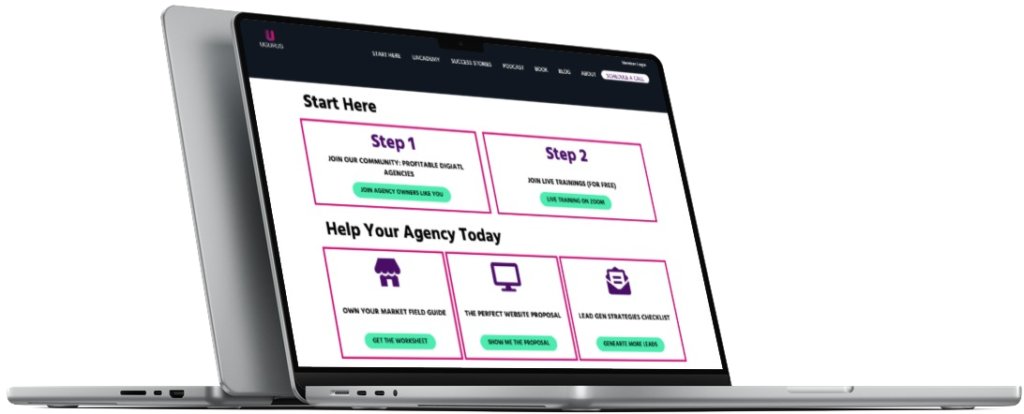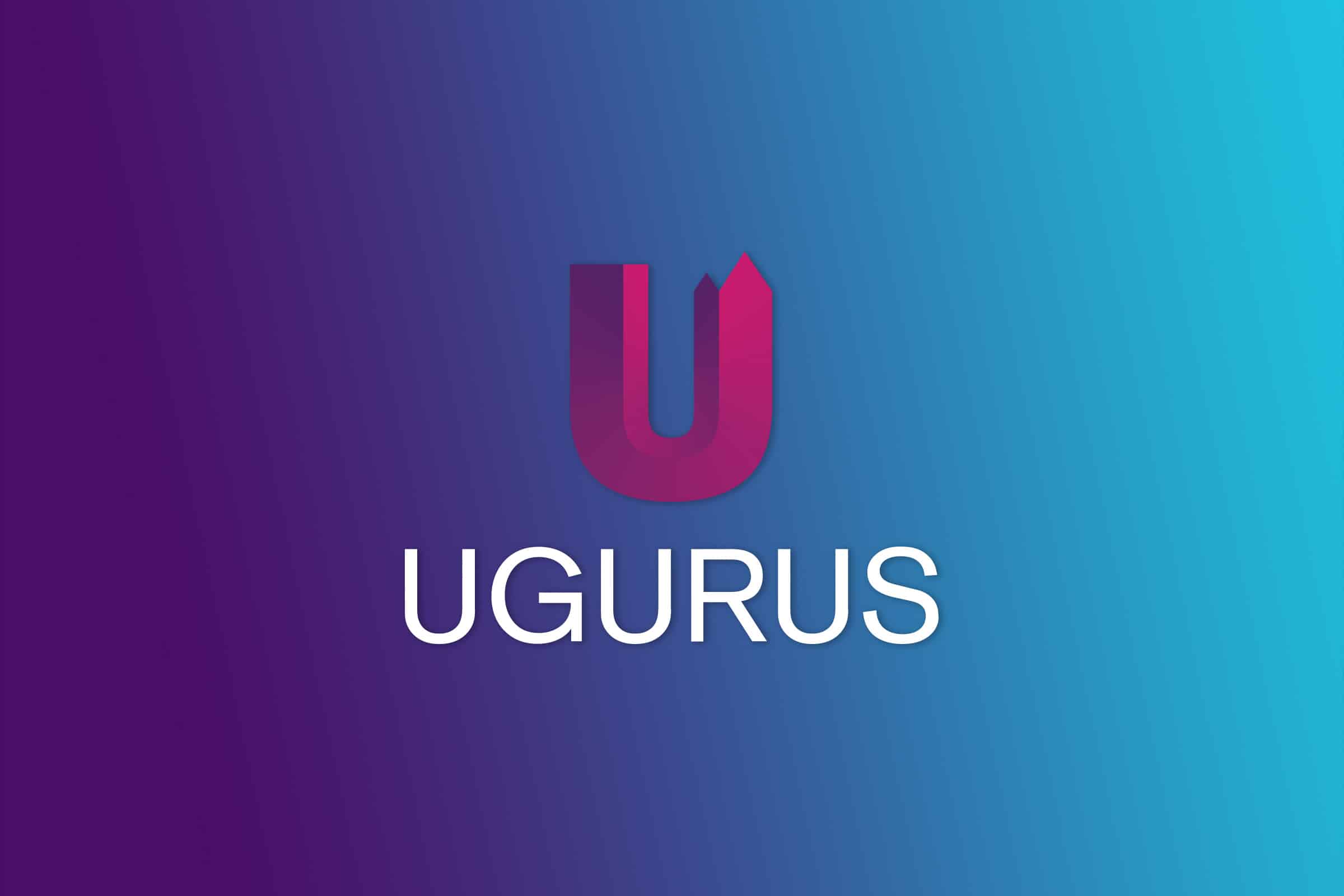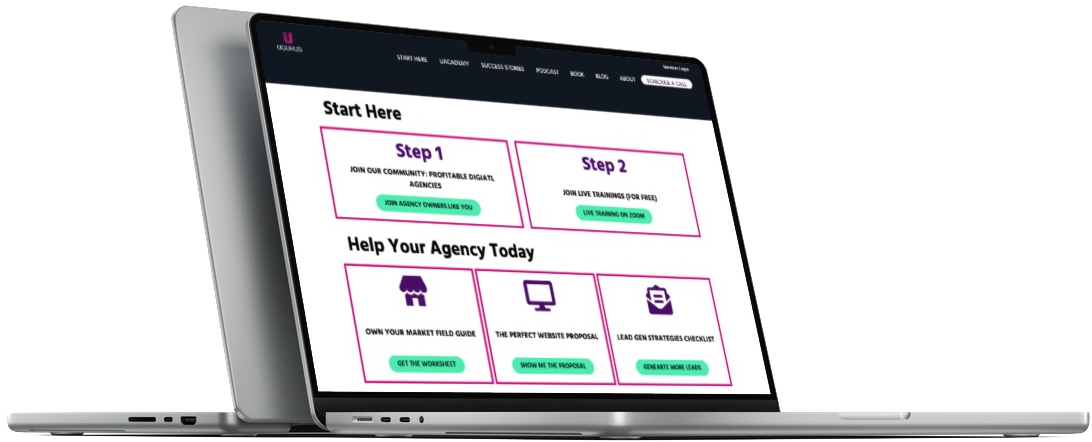When you understand what your customers want and need, you can build the right offer.
Have you ever wondered if you’re making the best possible offer to your customers?
Do you know what they want and need from your business?
Are you delivering the offer that will make a customer look at your agency and decide you’re the one for them?
Getting you to that stage is the point behind UGURUS’ Customer Development Experience. This is all about how to interview your clients, prospective clients, and the influencers in your industry.
You’ll find that this is the fastest way to learn what your customers want. This allows you to build a compelling offer, which means you can also create more compelling content and get more leads.
This is going to help you to find your niche and master your market in record time.
The Problems
The key problem that you have is that you don’t know what your market wants.
Most agency owners come up with ideas first. Then, they try to sell them.
I’m a self-admitted culprit of this method, by the way. I once spent six months in an office working on a product without ever once talking to a customer.
That’s a lot of time and money invested into something that my customers probably didn’t even need.
You build something, you release it, and…
Crickets.
The other problem is that your marketing misses the mark. You’re not on point with your messaging because you’re not inside your customers’ heads.
You feel like you’re shouting with a megaphone and nobody’s listening. That’s because they can’t connect with what you’re doing.
And usually, that’s because you’re not talking about the problems that keep them up at night.
That means you can’t get early adopters and you struggle to find customers when you release your offer.
All of this creates fear.
You fear the idea of creating an offer because you’re worried that nobody will want what you’re selling.
The Opportunities
This article gives you a clear opportunity to develop market clarity.
You’ll understand what your ideal customers think. You’re going to know what runs through their minds when their heads hit the pillow and where their thoughts turn to when they wake up.
Each and every one of you should know what your customers need and what’s stopping them from achieving their aspirations.
The other opportunity is that you’ll get dialed-in marketing.
That means every blog post, Facebook post, and ad hits the key pain points for your clients. And you don’t achieve that because of the ideas you develop while sitting in an office with your team. You achieve it because the market validates the problems before you start offering solutions.
Finally, I want you to have early adopters chomping at the bit to take your offer. The opportunity here is to have people excited to buy your product before they know exactly what it is.
And you do that by showing them that you’re confronting the problems that they have.
The Five Hot Principles
Now, it’s time to dig into creating the Customer Development Experience. This is all about interviewing your customers and prospective customers to find out what they want and need.
There are five hot principles behind this system. And if you master them, you’ll feel like you’ve unlocked the secrets of the universe.
Principle #1 – Script Your Interviews
The key idea behind customer development is to have conversations with clients to validate your ideas.
The first step for having these conversations is to script your interviews. A script helps you to stay consistent, which means you’re able to see patterns emerging in the answers that you get.
Those patterns are very important.
When you’re marketing your offer, you need your message to hit on the key problems that the majority of your audience has. The patterns that you see will show you what those problems are.
Scripting your interviews also allows you to remove bias from the process. You set the stage and you keep the conversation on-point.
For example, let’s say that you think lead generation is a problem in your market. You need to create a script and then go and talk to 30 or 40 customers. That script needs to unpack the problem and validate that it exists. Then, it needs to help you to understand why it exists.
We have several of these validation interviews templated at UGURUS. To access them, join UACADEMY.
Principle #2 – Build Your List
Once you’ve got your script and you know what type of interview you’re doing, you need to build your list.
That list contains the names of current, past, and prospective clients that are great fits for customer development.
One of the key problems that agency owners have with these interviews is that a lot of their clients say “no”. They don’t want to talk to you because there’s no context behind the conversation.
When you build your list, you’re identifying the people who you think have the problem that you’ve identified.
Let these people know that their insight won’t just help you with your business. It will also help them to dig into a problem that they have and maybe learn a couple of things along the way.
This list doesn’t need to be anything complicated. You just need a name, email, phone number, and website. It’s also worth keeping a persistence count that tracks how many times you’ve reached out to them.
You also need to prepare to get out of the building. You may need to do some work to get these interviews scheduled.
But I promise you that the feedback you get makes the work worth it.
Principle #3 – Stack Your Meetings
Customer development is at its most effective when you immerse yourself in your target audience.
That’s why you need to set your interviews up so they happen as close together as possible. This is a surgical process for you. You’re not looking to interview one person this week, two the next, miss the third, and talk to one more person in the fourth.
Stacking your meetings lets you get everything arranged so you get the most out of it.
Chefs have their sous chefs, who get everything in the right place so that the chef can cook.
When you stack your meetings, you’re playing the role of the sous chef for your agency. And that means you can cook better food when you move into the role of the chef for the interviews.
Having these meetings one after the other also means you’re hitting the hot button issues. You have different people talking about key issues. That’s when the patterns start to emerge in your head.
Principle #4 – Open Your Ears
Listening is where the magic happens.
Once you’re in the interview, you have to bring your attention 100% to the interviewee. Listen to what they say and how they say it.
You also need to listen for what they don’t say. Ask open-ended questions to get the client to elaborate and perhaps hit on issues that they haven’t thought about.
Try to understand their world views and their workflows. That’s going to give you some insight into how they view issues like lead generation and sales.
Finally, you can go off-script.
Having the script is really important. But if your client brings up an issue that you hadn’t thought about, they’re presenting you with an opportunity. You have the chance to dig into a problem that other agency owners probably haven’t thought about either.
This is your chance to ask the client to tell you more. It’s not in your script but you’re still getting valuable insight.
Principle #5 – Validate With Orders
At the end of the day, customer development is all about getting orders.
It doesn’t matter how many people in your market tell you that you’re amazing and earth-shattering. If they aren’t willing to write you a check, you’ve missed the mark.
People will lie to you and tell you that they love what you’re doing. But when you ask them to buy it, they don’t do anything.
You have to validate with orders.
Your first conversation is for learning about the problems. At the end of that conversation, you’ve got to try to arrange a follow-up conversation. If the client says yes, they’re giving you permission to make the transition from learning to offering something.
If your clients aren’t saying yes to that second conversation, you may find that you’re focusing on the wrong problem.
Validate Before You Offer
With this framework, you get to validate your ideas before you spend months turning them into an offer.
That means you’re not wasting time trying to solve problems that your market doesn’t have. Instead, you’re hitting the mark and creating something that your market needs. You’re creating excitement because you have an offer that gives them what they want.
In UACADEMY, I dig into this framework in a lot more detail, as well as providing you with those useful templates.
Want to learn more about creating compelling offers? Apply for a free strategy session today.
GET YOUR FREE AGENCY ACCELERATOR PACKAGE






